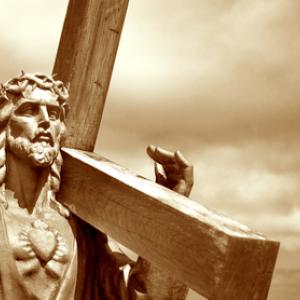Posts By This Author
The Whos Down in Whoville and Restorative Justice
Next to biblical nativity stories, How the Grinch Stole Christmas by Dr. Seuss is one of my favorite seasonal tales. We read it as a family every Christmas Eve.
While we typically view this vintage Dr. Seuss yarn as a reminder that there is more to Christmas than its trappings, it offers something unexpected too. It shares an example of restorative justice at work.
Redefining Faith
Lately I have been spending a lot of time reading the book of James. Reading this small yet powerful book has challenged me to think and re-think the very nature and meaning of faith.
I have found it interesting to listen to people speak about faith. Often faith is used to describe what a person believes and does not believe. For example, we might say that we believe in God, Jesus, Allah, Mohammed, Torah, the Bible, the Quran, and so forth. What people say they believe is then equated with their faith. Faith in God means that he or she believes in God. Because I believe in God, I have faith. Faith and belief seem to be synonymous.
This understanding or definition of faith, however, does not seem synonymous with actions or the way we live. Although ideally we believe that faith should affect the way we act, we still speak about faith and action separately. In other words, faith and living out that faith — action — is differentiated and understood separately. For example, it might be possible to have faith, yet not live a life that is based or reflects that faith. It might be possible to have faith in God, even in Jesus, but act in ways that are ungodly or un-Christ-like – participating in violence and war, killing, being inhumane, lying, cheating, being corrupt, and so forth. Although we may act in these ways, and participate in actions that are less than holy, the claim remains that we still have faith. We have faith because we believe in something.
The Political Subversion of the Cross
Last weekend – Easter – was a time where all Christians remember the tragic end of Jesus’ life, as well as the miraculous raising of Jesus the Christ from his death. The week prior to Jesus’ death – Holy Week – is one where Christians focus on Jesus’ arrival and entry into Jerusalem, the hub of Israeli and Jewish power, amid excited and adoring crowds. As we read through and remembered this tragic story, we heard and saw the excitement and adoration of the people quickly turn, resulting in a call by the people to kill – crucify! – this man they so enthusiastically welcomed. Not only do the people cry for his death, but they answer Pilate’s question by declaring let “His blood be on us and on our children” (Matt. 27:25). The multitude, in other words, embrace the responsibility for Jesus’ crucifixion, whereas Pilate, ironically, acts like a good Israelite seeking to separate himself from a deed that violates covenant justice (Gardner, 390). The result of the people’s eagerness, which was fed, we are told, by the chief priests and elders’ ability to persuade the multitude, lead to the death of Jesus on the cross.
My fear, however, as we remember the horrible and horrific event of the crucifixion, is that we have forgotten much of its significance, both historically in Jesus’ time and for us today. What we now call the “substitutionary atonement theory” has understood the cross primarily as the beginning of salvation, and not also as the culmination of a radical life lived within an Empire. This theory has tended to disconnect the life-path chosen by Jesus from the salvation attributed to the cross. The cross, as represented in the New Testament, is both an end and a beginning. It demonstrates the predictable end of life lived in service to the Kingdom of God within an Empire. It also invites us into a future in which the power of this life-ending cross becomes the power of a cross-initiated life.
Jesus — The One Who Shakes Foundations
This past week I had an opportunity to teach an intensive course on the book of Matthew. I enjoy these opportunities, not only to teach, but to look at and present a book from start to finish. Although it is not possible to delve into every detail found within the book, following the plot line from start to finish helps to pick up on themes and recurring events and/or elements that accentuate and highlight certain points throughout the broader story. It is easy to miss such connections when snippets and bits and pieces are read rather than reading the whole story from beginning to end.
One such theme is how unsettling — literally — the person of Jesus was. Throughout Matthew’s gospel we hear how Jesus shook the foundations of society.



